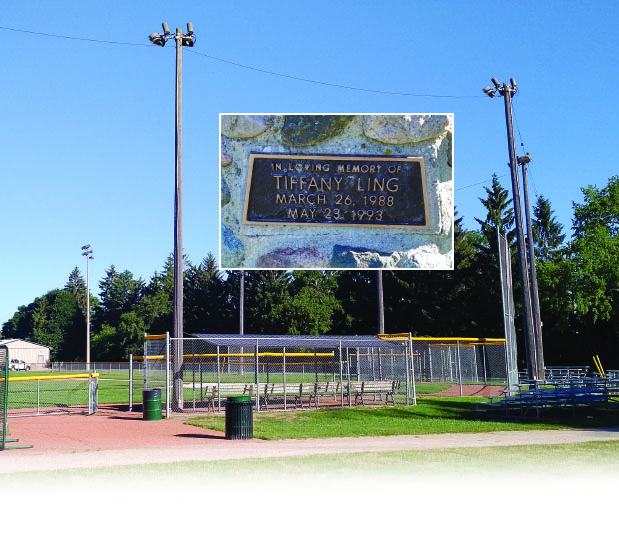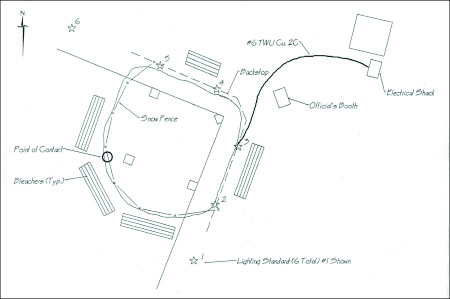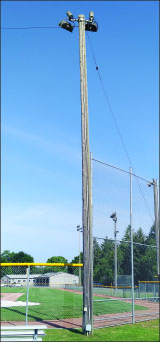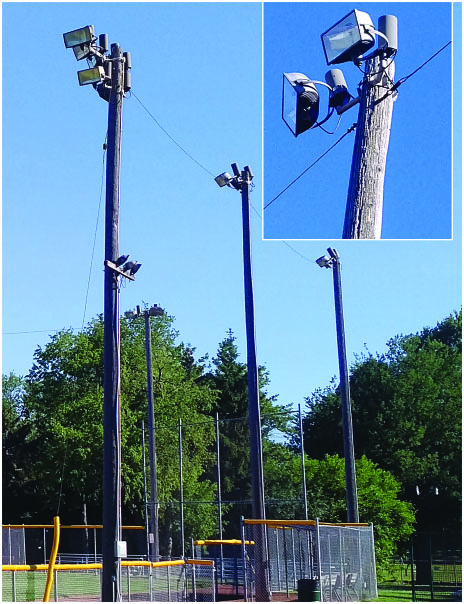Unfortunately, some Code changes are a direct result of a fatality. Canadian Electrical Code Rule 30-1024 1 (previously Rule 30-1030) is an example of a tragedy resulting in a change. It has been 25 years since that fateful day in May when the child was electrocuted, and it is time to remind inspectors and Code users of the importance of the wording in Rule 30-1024 1).
The accident happened on a day that should have been a lot of fun. The family of this little girl were attending a donkey baseball game. To keep the donkeys and the baseball in the infield, a snow fence was installed between the infield and the spectator stands. The snow fence was supported by the wood poles used for lighting the park. On the poles were a rigid metal conduit that was used for the two insulated conductors feeding the 600 V mercury vapour luminaires at the top of the pole. Prior to the game, one of the mercury vapour lamps ruptured and the filament in the lamp ended up touching the metal frame of the luminaire. As the rigid metal conduit on the pole was electrically connected to the luminaire and the wire within the snow fence was connected to the rigid metal conduit, both the rigid metal conduit and the wire of the snow fence were now energized.

Unfortunately, the CE Code of the day when the installation took place did not require a bonding conductor to be installed with the branch circuit conductors to the pole. During the game, the young girl ran through the wet grass to the fence and when she grabbed the fence, she was electrocuted in front of her family.

Prior to this tragedy, CE Code Rule 30-1030 1 stated: “All non-current-carrying metal parts within 2.5 m of locations accessible to unauthorized persons shall be grounded.” This rule did not require the rigid metal conduit to be bonded to ground, it only required the rigid metal conduit to be connected to a ground electrode. During the investigation, the electrical inspectors measured approximately 320 V between the wire on the snow fence and the earth where the accident occurred. The reason the branch circuit overcurrent device did not operate with the filament touching the grounded metal was because the impedance back to the system neutral was too high, and this fact resulted in limiting the current below the operating range of the branch circuit overcurrent protection.
After the completion of the investigation, the Authority Having Jurisdiction (AHJ) required existing baseball parks and other outdoor sporting facilities with pole lighting to have all metal parts within 2.5 m of grade to be adequately bonded to ground. The next step was to change the CE Code to read: “1) All exposed non-current-carrying metal parts of electrical equipment and exposed metal parts of non-electrical equipment within 2.5 m of finished grade or at locations where unauthorized persons may stand shall be bonded to ground by a separate bonding conductor sized in accordance with Table 16.” The only change to this subrule in the 2018 CE Code is the change of reference for
Table 16 to Rule 10-614 (that references Table 16). The first significant change to the subrule resulting from this fatality is the addition of the words “of finished grade or at locations where unauthorized persons may stand.” This made it very clear that the rule is addressing all exposed metal at the bottom of the pole. The second significant amendment is the change in the wording from “grounded” to “bonded to ground by a separate bonding conductor sized in accordance with Table 16.” This change provides an adequate path for the instantaneous operation of the branch circuit overcurrent device in the event of a short-circuit to non-current carrying metal parts.
Inspectors need to keep in mind that the referenced Code requirement is not just for sporting facilities and not only for luminaires. Where electrical equipment installed on a pole is grounded to a ground electrode and not bonded to the system neutral, a short-circuit to the metal enclosure of the equipment at the top of the pole will result in an energized grounding conductor on the pole. This sets up the same scenario that resulted in the fatality at the baseball park. CE Code Rule 30-1024 requires the bonding conductor within the supply non-metallic sheathed cable to be connected to the equipment metal enclosure and to the grounding conductor.
My hat goes off to the inspectors that did an exceptional job investigating this tragedy. The quality of the investigation resulted in Code changes that will save lives. My heart and prayers continue to go out the family of this little girl. Even after all this time, I can not look at an outdoor baseball park without thinking of that awful day.
















Find Us on Socials